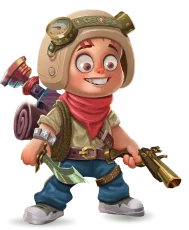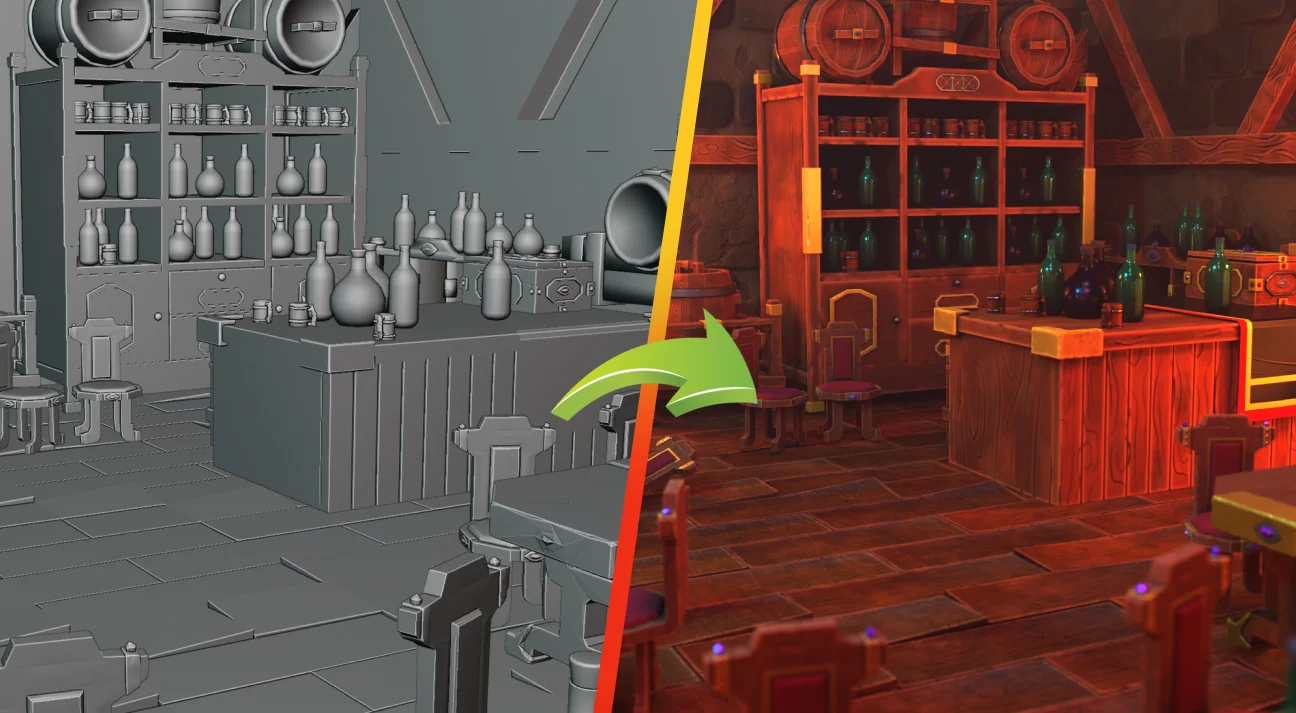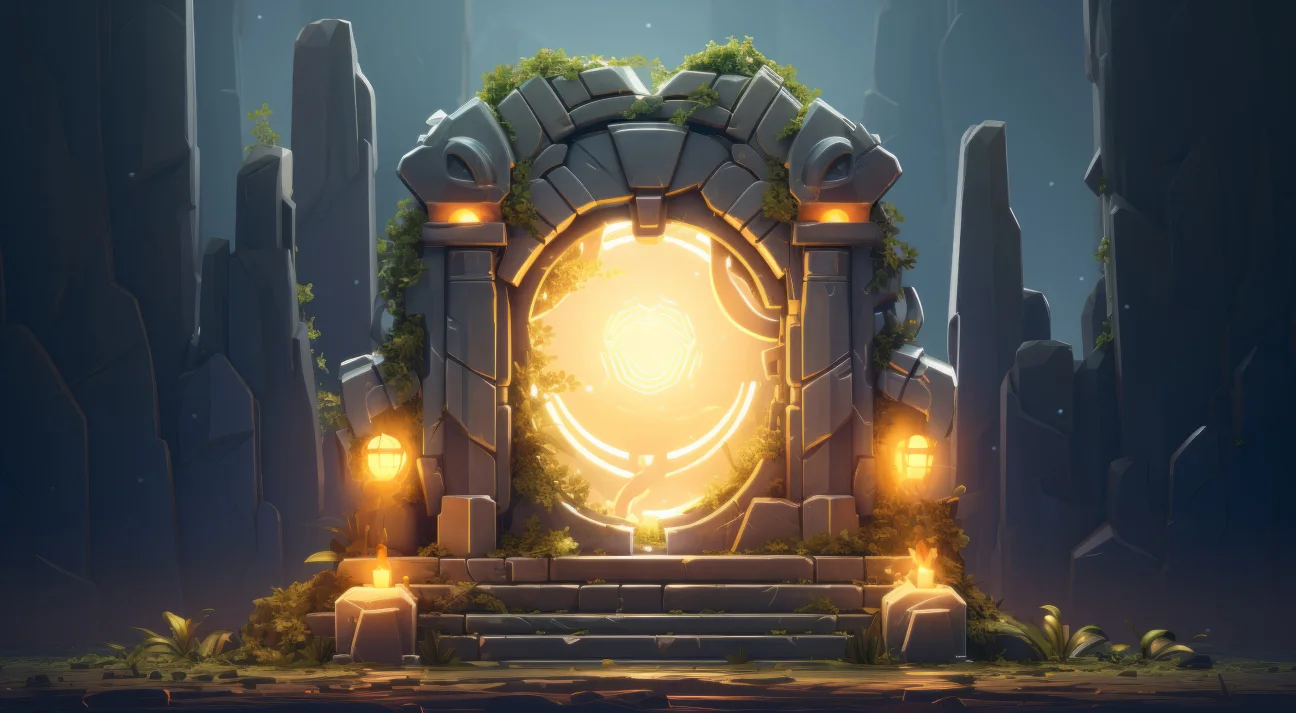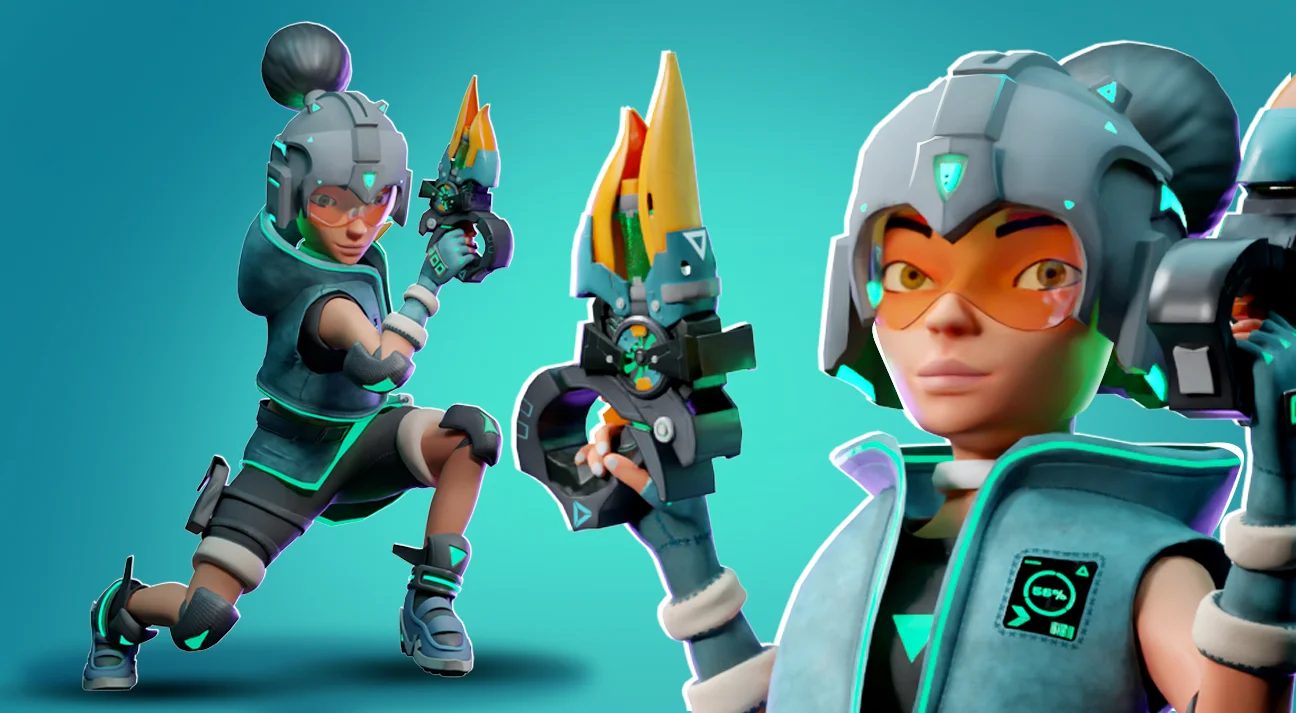
How to Effectively Do 3D Character Modeling for Games?
From Mario and Pac-Man to Nathan Drake of the Uncharted Series, these characters have carved a special place in the hearts of gamers. They did not just become our favorite characters because of the role they played in the game storytelling but also based on how well their 3D character modeling was done.
In games, characters captivate players through distinctive visual design, expressive animations, unique characteristics, and dialogues written for them. To infuse your game characters with these traits and make them as memorable as other iconic gaming figures, meticulous detailing is crucial.
This is where our artistic approach to creating 3D character models for games can be invaluable. So, let’s dive in.
Understanding 3D Character Modeling for Games
3D character modeling is a multi-level process of creating three-dimensional representations using powerful 3D modeling tools, specifically by skilled 3D character artists. Unlike 2D characters, 3D-modeled characters add depth, dimension, and dynamism to the game.
The beauty of 3D video game character modeling for games lies in the intricate detailing and thoughtful design, which allows them to replicate real-life characters, surpassing mere realism.
Moreover, players can choose these characters as their avatars within the game, controlling and interacting with the respective game environment to showcase their gaming skills.
What Role Does 3D Character Modeling Play In Games?
When it comes to roles, 3D game character modeling plays its part in games like the following:
- 3D character models enhance the visual appeal of games with their realistic and detailed visuals.
- 3D modeling allows the creation of characters with distinct personalities, expressions, and features, which elevates the game narratives.
- Iconically designed 3D characters can contribute to the game’s brand recognition.
- Well-designed characters evoke emotions in the game, playing an important role in captivating players to play the game for more time.
- In a competitive gaming industry, high-quality 3D character modeling can set a game apart.
In summary, 3D game character modeling is pivotal in shaping the visual, narrative, and interactive elements of gaming, creating a holistic and enjoyable experience for players.
What Are the Different Types of 3D Character Modeling?
If you look at the different ways that 3D modeling is done, then there are mainly two different types: POLYGON 3D modeling and NURBS (Non-Uniform Rational B-Splines) modeling. But which type to choose is a question. So, let’s know them for further clarity:
Polygon 3D Modeling
Polygonal 3D characters are typically modeled using different shapes of polygons, which are also known as polys. When these varied shapes of polygons are connected, they form a mesh, which creates the illusion of a complex 3d puzzle.
Further, these polys can also be edited and reshaped by 3D artists to give more detailing to the mesh and form real-world-like models that can be viewed from all angles.
In this modeling, artists first create a base mesh using simple geometric shapes like spheres, cubes, or cylinders. This base mesh serves as the initial structure for the character. Further, they employ different polygonal modeling techniques like Box modeling to create the basic shape of the character and refine it by extruding and shaping, and Edge modeling for the character’s silhouette and connecting edges to define features.
In polygonal 3D character modeling, two main types of models are created: High Poly and Low Poly. As the names suggest, both only have differences in the number of polygons used. While high poly models are used for the game elements close to the game camera, low poly models are used for the elements positioned away from the game camera.
NURBS 3D Modeling
NURBS (Non-Uniform Rational B-Splines) character modeling is an alternative approach to polygonal modeling, which is also known as spline modeling. This model uses a number of flexible curves and points to create a mesh for the 3D character modeling. Though not using polygons for the model creation, it offers smoother models and better quality 3D game art.
With this precision in outcome art quality, there also comes difficulty. In NURBS, models are created using mathematical expression, in which modifying individual model parts/curves without affecting the other curves can be a tough job. Because of this complexity, NURBS becomes a less popular choice for character creation and other game modeling requirements.
Therefore, when planning to create high-precision game art pieces and iconic characters for your game, it’s highly recommended to hire a professional game art design studio. They have designated teams of 3D artists who specialize in different areas. Together, they can help you create game masterpieces with detailing that give an impression of realism and attract players.

How to Model a 3D Character for Games?
In a game, there’s always an appeal for designing characters that should not only be of high quality; they should also give a sense of belonging to the game environment and fuel a life in it. This requires a proper approach and clarity before moving further to modeling. Therefore, 3D artists at 300Mind utilize the following step-by-step approach to create video game character models for games:
3D Character Discovery and Concept Art
A game is incomplete without its character. When it comes to 3D game development, 3D character modeling plays a vital role in fueling life and dynamism in the game. But for it to add belonging to the game world, you need to conceptualize the character’s appearance, wardrobe, personality traits, its purpose in the game, the types of actions it can perform, and more.
To bring that vision and concept to life, you must collect a range of references and inspirations that align with such. In that reference, you can also prepare or ask a professional sketch artist to create a rough sketch per your vision.
Professional character artists generally begin game concept art by preparing many sketch references per the requirement. Once it’s finalized, they proceed to mode boarding and create sketch versions that match with body and facial features and the silhouette of a character.
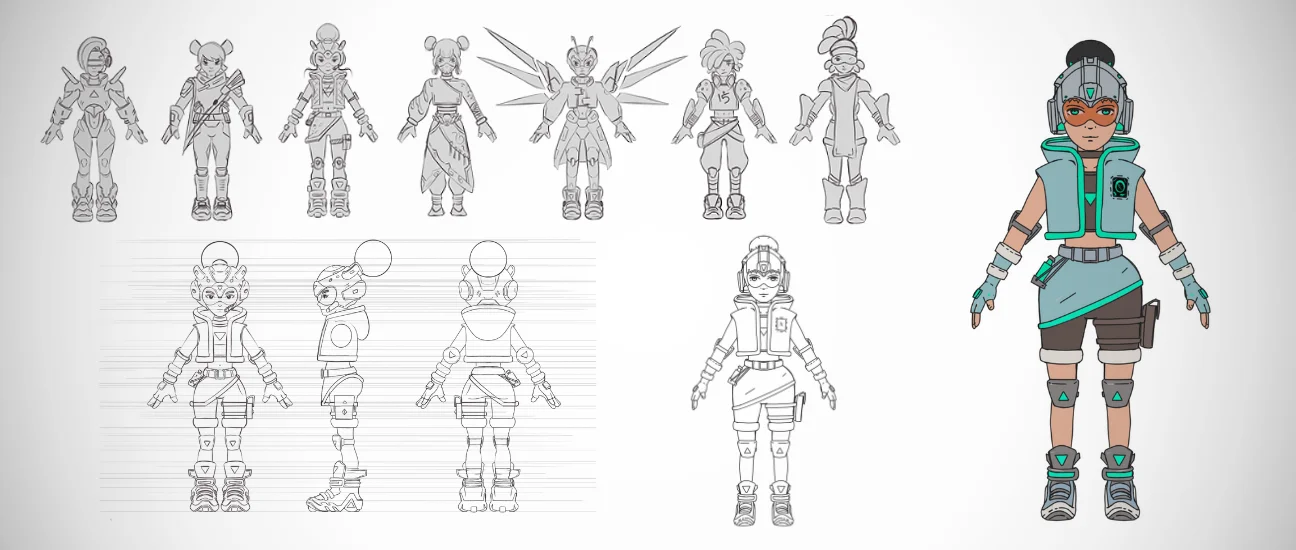
Blocking
Now, artists have clarity on how the character will look. Considering that artists will use different shapes like cubes, cylinders, and custom shapes as build blocks for the character design. This process covers creating the silhouettes of the character, encapsulating the core design.
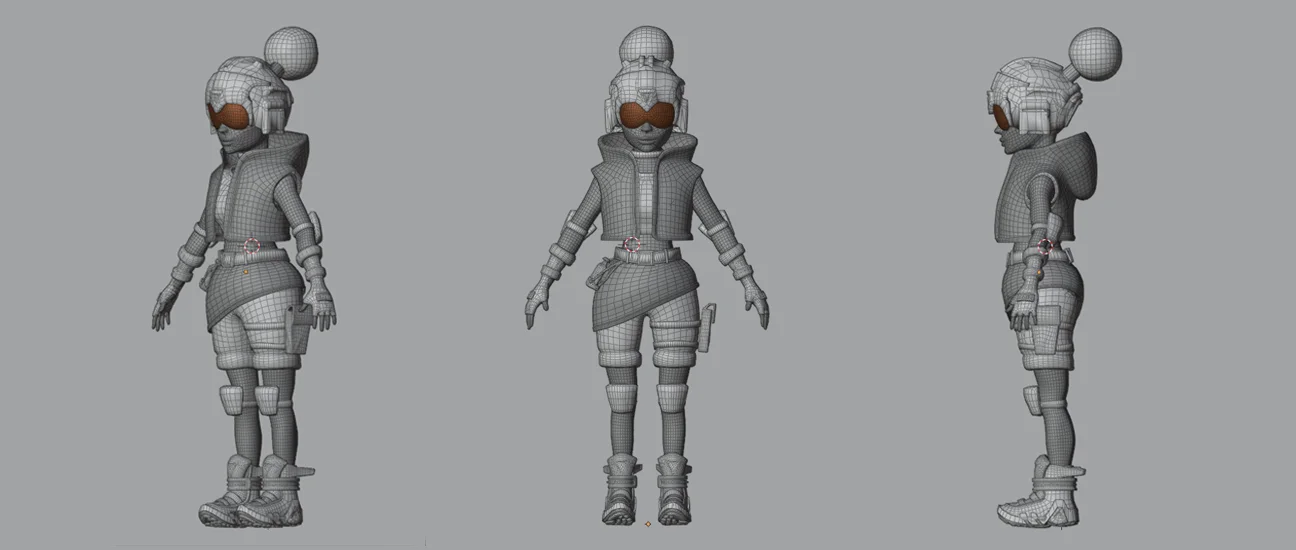
Sculpting
Have you ever seen a sculptor sculpting their art piece? You must have! The sculptor gives a proper shape, finishing, and detailing to the block of the clay, it’s faced with their hands and using sculpting tools. This digital 3D character sculpting process is the same one; only the medium of sculpting changes to the digital sculpting software, and that sculptor is known as a 3D artist.
Just like a Sculptor adds detailing to their art piece using their hands, the 3D artist turns the blocked model into a smooth, recognizable model using their styluses. They convert the sphere block added on the top of the block model into a face while sculpting structures like eyes, chins, cheekbones, etc.
Just like that, other blocks connected in the model are converted into smooth character models. Materials, here, in the sense of polygons or curves are added or removed from the model to fine-tune the 3D game character design.
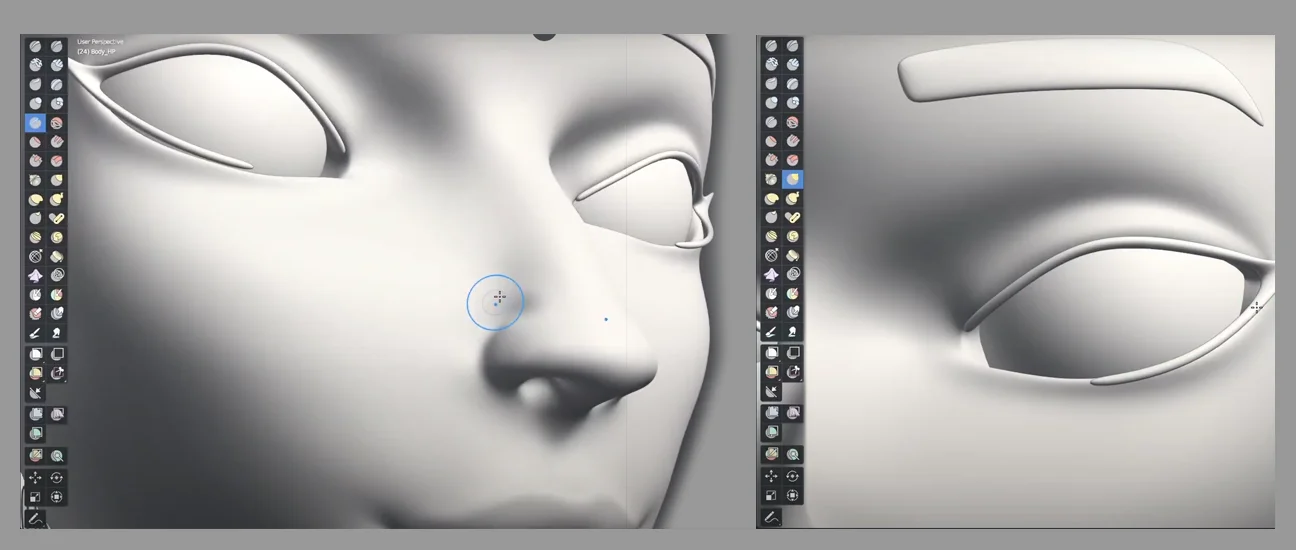
Topology Creation
In 3D modeling, topology stands for adding intricate details and surface structure on the model that improves its visual richness. To add a better meaning, topology refers to the arrangement and flow of the vertices, edges, and faces that make up the surface of a 3D model.
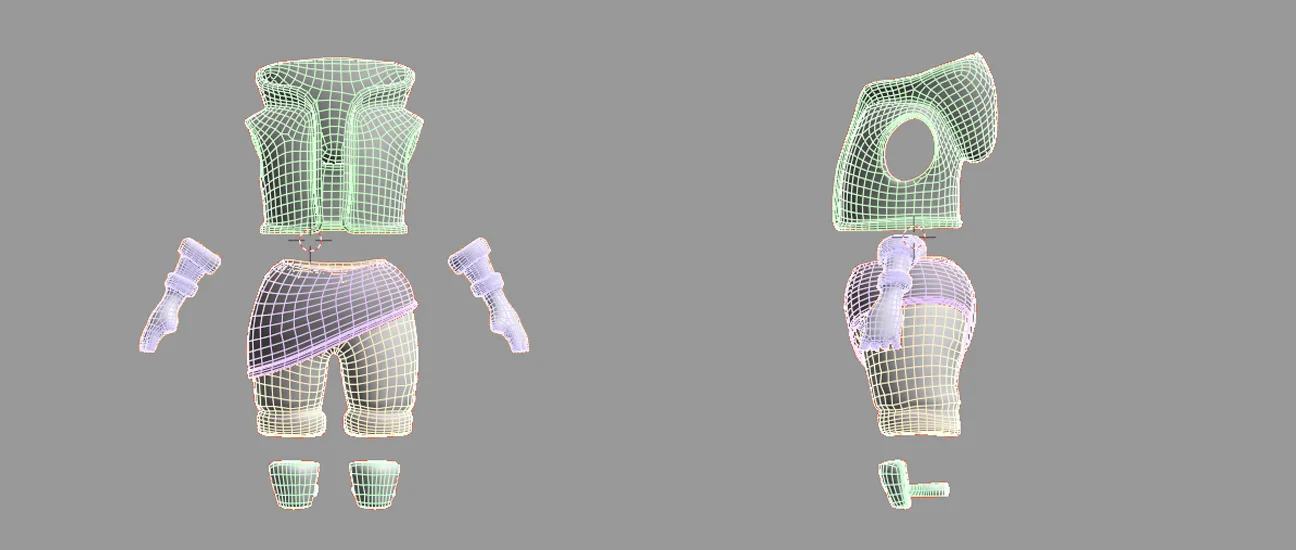
It is crucial for defining the structure and shape of the model, influencing how it deforms, animates, and interacts with light.
Understanding the importance of topology, artists illustrate it in the following manner:
- Place edge loops around the character’s features like eyes, mouth, and joints, which influence model deformation during animation and smooth movement.
- Adding vertex density for the character features that require more detailing in character’s features like facial expressions.
- A well-defined edge flow can enhance the appearance of muscles or facial expressions, which contributes to a more realistic look.
- Efficient topology helps optimize rendering performance.
UV Unwrapping and Texture Baking
Unwrapping and baking are essential processes in 3D character modeling that help artists prepare 3D models for texturing. During unwrapping, artists convert the 3D surface of a model into a flat 2D representation, which is similar to unfolding a cardboard. This allows texture artists to retexture the model by applying paint or 2D images onto the 3D model accurately.
During the baking process, artists transfer information, such as lighting and shading details, from a high-polygon model to a lower-polygon model. In the backend, details from the high-poly model, like shadows and highlights, are baked onto a texture map. As a result, the high-poly 3D character model is replaced with a lower-polygon version, which receives the baked texture map and detailed textures.
Texturing
After UV unwrapping and baking, 3D artists apply textures to the game character to add color, patterns, and surface details. When using realistic materials, they also use techniques like PBR (Physically Based Rendering).
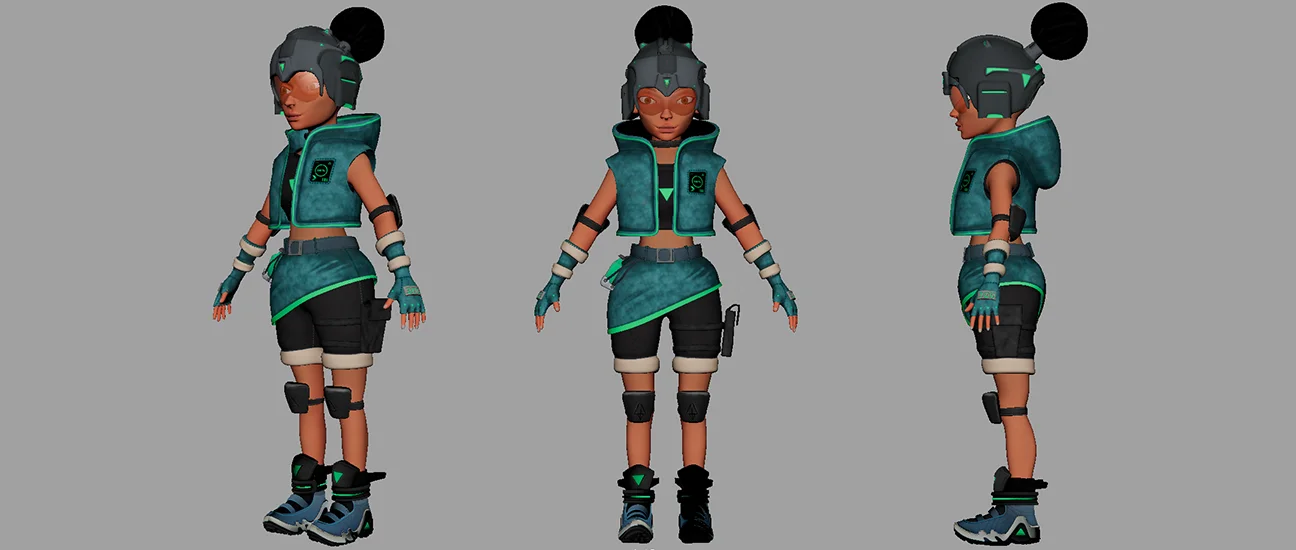
Through this method, they ensure to shape the model in a way that matches the real-world prototype/concept in every way possible by eliminating non-realistic, and wrong features.
Rigging and Skinning
In this process, bones are placed inside the 3D character model strategically, corresponding to joints and areas of movement. On top of that, a proper joint hierarchy is established to ensure the natural movements of the character, contributing to a more immersive gaming experience. Further, constraints and controllers help in defining the range of motion and control the character’s movement smoothly.
Rigging enables animators to manipulate the character’s pose and movements. If rigs are applied correctly on characters, then artists can create realistic and expressive animations, enhancing the overall visual storytelling in games.
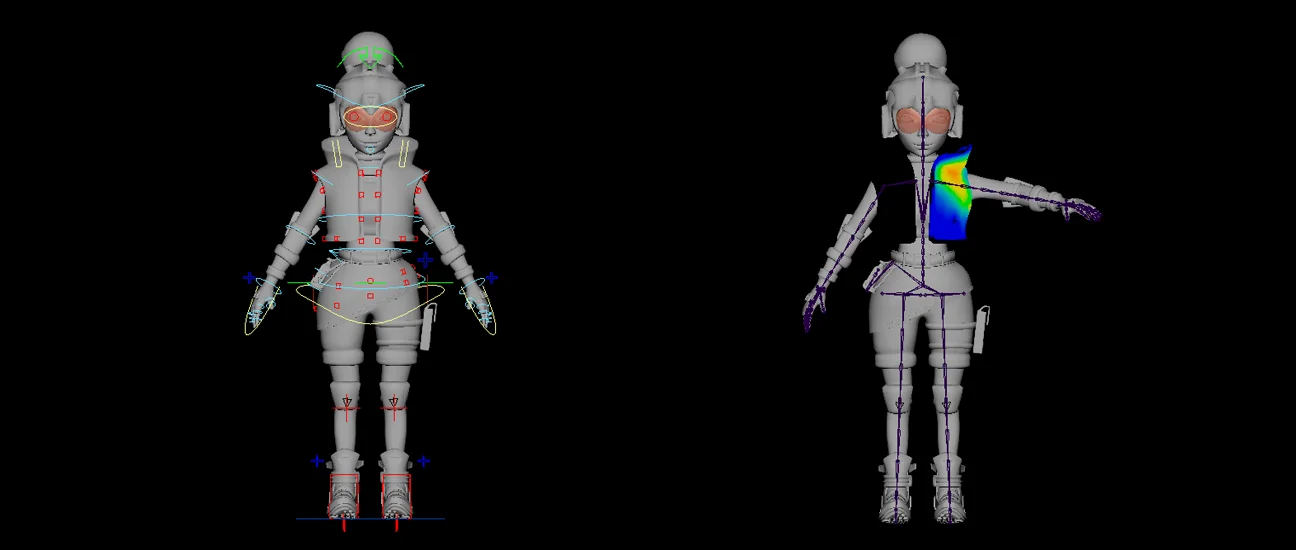
Skinning, on the other hand, is also known as weighting, which helps in binding character mesh to its rig. In this, each bone in the rig of the 3D character model has assigned a specific vertex. This weighting to vertices determines the influence of each bone on the model, which helps in the smooth deformations during animation. 3D artists often use tools to paint weight values onto the 3D model to have precise control over how each bone affects the mesh.
The reason behind using skinning in 3D character modeling is to deform it realistically during animation so no unnatural distortion can happen, leading to preserving the character’s proportions. It also plays an integral role in creating characters that can have various poses and movements, adding versatility to game animation.
Rendering
Rendering involves the process of converting a 3D model into 2D images that can be displayed on a screen. It helps in visualizing 3D game characters in real-time or during cutscenes. It also involves applying post-processing effects, like bloom, depth of field, and motion blur, to enhance the visual appeal of the final images.
Applying rendering techniques like LOD (Level of Detail) can help to optimize the performance of the character based on their proximity to the camera.
Character Animation
After applying rigs, training characters, rendering their movements, and optimizing the character movements and motions, the ultimate step of character modeling is Game Character Animation. During this phase, frame-after-frame effects are applied to characters. With this, the life is fueled in the character when it gets its movements and expressions, showing the character’s personality.
When doing animation for the game characters, 3D artists from our team always take care of a few things that should look realistic. Even the expressions applied on a character’s face, it should look genuine – be it laughter or anything else.
How Can 300Mind Help in Crafting 3D Characters for Games?
300Mind specializes in delivering unparalleled 3D character design services tailored to the gaming industry. Our team of experienced artists, designers, and developers collaborates seamlessly to bring your game characters to life, ensuring a visually stunning and immersive gaming experience.
Our 3D artists will work closely with you to understand your vision and game requirements. Leveraging cutting-edge tools and technologies, our skilled 3D character artists create intricate character models by focusing on anatomy to attire.
With a commitment to excellence, innovation, and seamless collaboration, we bring your imaginative concepts to life, ensuring an unforgettable gaming experience.
So, are you ready to model unique 3D characters for your game? We can help you with that. Share your requirements with us to get a quote.
Frequently Asked Questions
3D character modeling is a crucial aspect of game development, which is used to enhance the visual appeal, immersion, and storytelling within a gaming environment based on the way it interacts within it.
Autodesk Maya, Blender, Substance Painter, Unreal MetaHuman, and various other tools are used to create 3D character models for the game.
